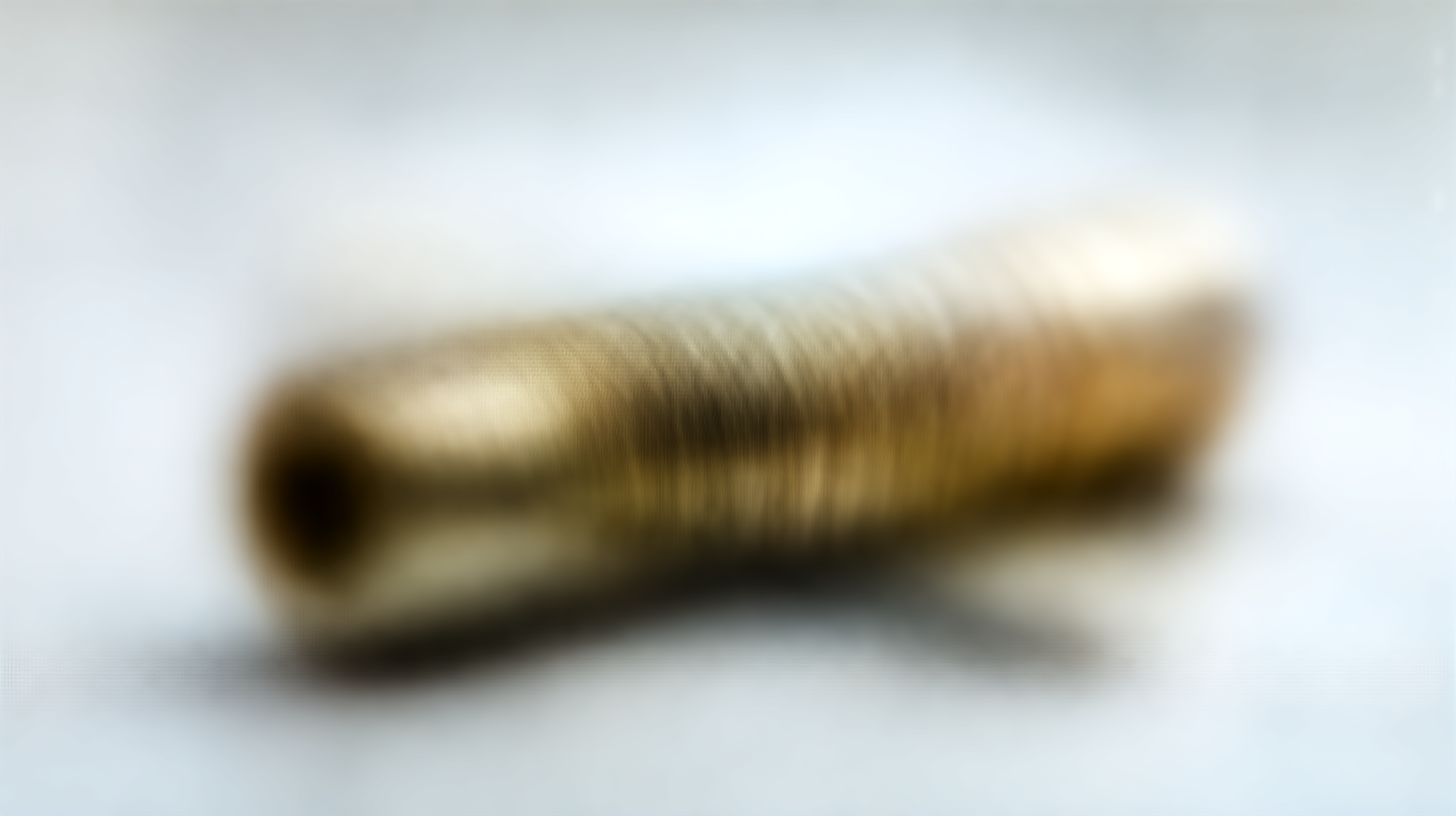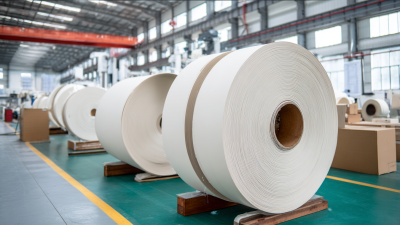Leave Your Message
When it comes to designing and building electronic devices, one crucial component that often goes overlooked is the Touch Button Spring. This small yet essential spring facilitates the tactile feedback that users rely on when interacting with devices, making it vital for enhancing user experience. However, selecting the right Touch Button Spring can be a daunting task, given the variety of materials, sizes, and spring constants available on the market. Understanding the specific requirements of your application, including the device's size, intended use, and desired actuation force, is key to making an informed choice. By following a systematic approach to evaluate different options, you can ensure that the Touch Button Spring you select not only meets your technical specifications but also contributes to the overall design aesthetic and functionality of your electronic devices. In this guide, we will explore essential factors to consider when choosing the perfect Touch Button Spring for your needs.

Touch button springs play a crucial role in the functionality of electronic devices, acting as the intermediary between a user’s touch and the internal circuitry of the device. These springs provide the necessary feedback to users, ensuring that their input is registered while also maintaining the structural integrity of the button mechanism. According to a report by MarketsandMarkets, the global market for electronic springs is projected to reach USD 1.9 billion by 2025, highlighting the increasing reliance on touch technology in consumer electronics.
The performance characteristics of touch button springs, such as their force constants, travel distance, and material composition, can significantly affect the user experience. For instance, a study from the International Journal of Advanced Manufacturing Technology noted that springs made from stainless steel exhibited a higher fatigue resistance, which is vital for devices used frequently. Additionally, the correct selection of spring can enhance tactile response, something that a user survey conducted by Tech Research Group identified as a key factor in consumer satisfaction—83% of respondents indicated that tactile feedback greatly influences their preference for device usability.
Understanding these factors is essential for manufacturers aiming to create reliable and user-friendly electronic products.
 When selecting a touch button spring for electronic devices, understanding the material types is crucial for ensuring both durability and performance. Stainless steel is a popular choice due to its excellent resistance to corrosion and wear, enabling it to withstand the rigors of everyday use. This material offers a significant advantage in environments where moisture and humidity are common. Additionally, stainless steel springs can maintain a consistent performance across a range of temperatures, contributing to their reliability.
When selecting a touch button spring for electronic devices, understanding the material types is crucial for ensuring both durability and performance. Stainless steel is a popular choice due to its excellent resistance to corrosion and wear, enabling it to withstand the rigors of everyday use. This material offers a significant advantage in environments where moisture and humidity are common. Additionally, stainless steel springs can maintain a consistent performance across a range of temperatures, contributing to their reliability.
On the other hand, copper springs bring unique benefits, particularly in terms of conductivity. Copper's superior electrical properties make it an excellent option for applications requiring fast and efficient signal transmission. However, it is worth noting that copper is more susceptible to oxidation, which can affect its longevity. Therefore, if choosing copper, it’s advisable to consider protective coatings or regular maintenance to prolong its lifespan.
Tips: When deciding between stainless steel and copper, assess the operating environment of your electronic device. For moisture-prone areas, stainless steel is likely the better choice. Conversely, if conductivity is paramount, consider copper while being mindful of its maintenance needs. Always test samples in specific applications to ensure optimal performance.
When selecting a touch button spring for your electronic devices, understanding key dimensions and specifications is crucial. The size of the spring not only affects the tactile response but also the overall durability and reliability of the device. According to industry reports, springs are categorized by their outer diameter, wire diameter, and free length. A recent study by the Mechanical Springs Association revealed that a proper fit can enhance device performance by up to 20%, reducing the need for frequent maintenance or replacements.

Tips: Always measure the available cavity space in your device before selecting a spring. Ensure that the outer diameter does not exceed the designated space, as an oversized spring can lead to operational issues and user dissatisfaction. Additionally, examining the wire diameter is essential, as thicker wires can offer better resilience but may compromise the tactile feel.
Moreover, consider the spring’s free length in relation to how it will be compressed during use. The right compression ratio can significantly impact the responsiveness of the touch button. As highlighted by TechSpring Innovations, mismatched spring lengths can result in increased wear and a decrease in user satisfaction, with reports indicating that around 30% of device failures are linked to improper spring selections. Always cross-reference specifications and consult manufacturers for detailed recommendations tailored to your specific application.
When selecting the right touch button spring for electronic devices, understanding the compression strength is crucial, as it directly impacts user experience. Recent findings highlight that the mechanical properties, such as tensile strength and compressive strength, significantly influence the performance and durability of components. For instance, the compressive strength of materials can determine the reliability of electronic buttons under varying force requirements. Assuring that the spring can handle the expected pressure without failure is essential in preventing functional shortcomings in devices.
Tips for selecting the right spring include assessing the device's operating environment and potential wear factors. It is advisable to refer to data from industry reports that recommend testing springs under realistic conditions that mimic actual usage. Another tip is to conduct a multi-criteria analysis, similar to those undertaken in the manufacturing of safety-critical components, which emphasizes not only strength but also the overall design and material selection that can affect long-term usability.
The mechanical integrity of touch button springs must be prioritized, especially when considering factors like compression force and user interaction frequency. Implementing rigorous testing protocols, akin to those used in the evaluation of tablet defects, where variations in tensile strength influence overall reliability, can lead to rediscovering optimal spring choices that enhance user satisfaction and product longevity.
This bar chart illustrates the compression strength of different touch button springs and their impact on user experience. Higher force requirements may enhance tactile feedback but could also lead to fatigue with prolonged use.
When selecting touch button springs for electronic devices, environmental considerations play a crucial role, particularly when it comes to vibration and temperature resistance. Electronic devices often face various environmental challenges, including temperature fluctuations and mechanical vibrations, which can impact their performance and longevity. Choosing springs made from high-quality materials that can withstand these conditions is essential for ensuring reliability and functionality.
Vibration resistance is particularly important in applications where devices are subject to constant movement or impact. Springs designed to absorb and dissipate vibrational energy help minimize wear and tear on electronic components, thereby extending the lifespan of the device. Similarly, temperature resistance is vital for springs used in environments with extreme heat or cold. Selecting materials such as stainless steel or specialized alloys can enhance performance under thermal stress, preventing issues like fatigue or deformation. By carefully considering these environmental factors, designers can enhance the durability and efficiency of their electronic devices.
| Spring Type | Material | Vibration Resistance | Temperature Range (°C) | Environmental Impact |
|---|---|---|---|---|
| Compression Spring | Stainless Steel | High | -20 to 150 | Recyclable |
| Tension Spring | Music Wire | Medium | -10 to 120 | Low |
| Torsion Spring | Phosphor Bronze | High | -30 to 200 | Moderate |
| Flat Spring | Carbon Steel | Low | -20 to 100 | High |
| Conical Spring | Alloy Steel | Medium | -25 to 175 | Recyclable |






